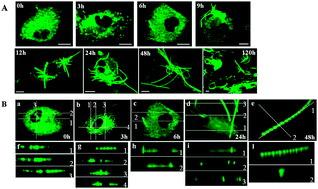*
Corresponding authors
a
National Nanotechnology Laboratory, Institute Nanoscience CNR (NNL, CNR-NANO), via Arnesano, Lecce, Italy
E-mail:
ilariaelena.palama@nano.cnr.it
b
Dept. of Physics, Sapienza University, p.le A. Moro 2, Rome, Italy
c
Hematology and Clinical Proteomics Unit, “Vito Fazzi” Hospital, University of Salento, Piazzale Muratore, 73100 Lecce, Italy
d
Italian Institute of Technology (IIT) - Center for Life Nanoscience@Sapienza, Rome, Italy
e
Bone Regeneration Laboratory, Rizzoli Orthopaedic Institute, via di Barbiano 1/10, 40138 Bologna, Italy
f
Laboratorio MIST.E-R, Via P. Gobetti 101, 40129 Bologna, Italy
g
ISOF, Consiglio Nazionale Ricerche, Via P. Gobetti 101, 40129 Bologna, Italy
h
Mediteknology srl., via Arnesano, Lecce, Italy
i
Dept. Matematica e Fisica ‘Ennio De Giorgi’, University of Salento, via Monteroni, Italy
j
Italian Institute of Technology (IIT) - Center for Biomolecular Nanotechnologies, via Arnesano, Lecce, Italy


 Please wait while we load your content...
Please wait while we load your content...